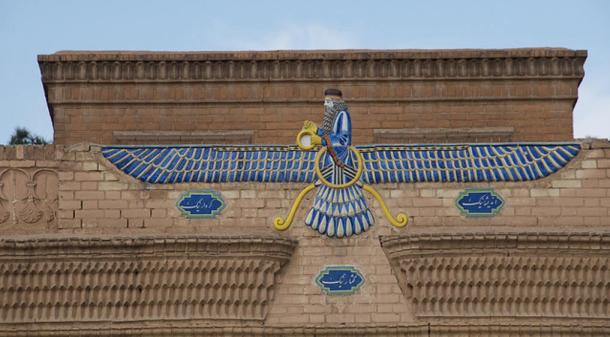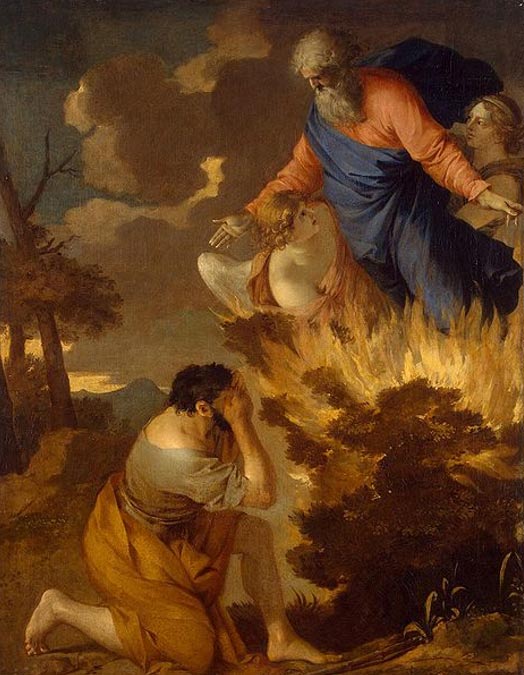
Fire Symbolism: Flames that Ignite Faiths and Inspire Minds
Since it was first proposed by the Pre-Socratic philosopher, Empedocles of Acragas, fire has been regarded in the Western world as one of the four classical elements. The status of fire as a component of life can be found in the philosophy of other ancient cultures as well. Moreover, fire has a highly symbolic function in many of the world’s religious beliefs.
Agni, the Hindu Fire God
In Hinduism, the element of fire is personified by a deity by the name of Agni. In Hindu iconography, Agni is depicted with flaming hair and rides on a goat, thus making him easy to identify. Agni is associated with various forms of fire, including: sacrificial fires, domestic fires, the fire of the funeral-pyres, and the digestive fire believed to be within every human being. Of these fires, Agni is most closely associated with sacrificial fires. This is due to the belief that Agni was responsible for carrying the offerings of human beings to the gods.
In one myth, Agni’s brothers (the various forms of fire, with the exception of the sacrificial fire) had been broken whilst bringing the sacrifices of man to the gods. When it was Agni’s (the Oblation-bearer’s) turn to take over this task, he disappeared, and “entered the seasons, the waters, and the trees.”

Agni, the Hindu fire deity. (Public Domain)
When the gods found him, Agni demanded something in return for his services, “Let my life-span be long, and let me have various oblations, and let my older brothers be without injury at sacrifice after sacrifice…” All this was granted by the gods, and Agni became the bearer of man’s sacrifices to the gods.
- Ancient Symbolism of the Magical Phoenix
- The Four Mythological Symbols of China
- Eternal Flames: Geologists Investigate Ancient Myths to Know More about Modern Fuel
- Spontaneous Human Combustion: A Burning Mystery
Ahura Mazda of the Zoroastrians
Another use of the symbolism of fire is found in Zoroastrianism. Contrary to popular belief in the West, Zoroastrians do not worship fire. Adherents of this faith, however, do believe that the elements, including fire, are pure.
In addition to being a symbol of purity, fire is also regarded by Zoroastrians as representing Ahura Mazda’s (the supreme god of Zoroastrianism) light or wisdom. Whilst Ahura Mazda is generally said to not have a physical form, but exists instead as a being of purely spiritual energy, his imagery is also rather fire-oriented. For instance, Ahura Mazda has been at times associated with the sun and its life-giving powers. Ahura Mazda has also been perceived as the light of wisdom that pushes back the darkness of chaos and ignorance.

Ahura Mazda relief on Ataskhadah Zoroastrian fire temple in Yazd, Iran. (CC BY 2.0)
Fire in Christianity
The manifestation of the divine in the form of fire may be found in the Abrahamic faiths as well. In Christianity for example, the Holy Spirit is said to have descended on the apostles in the form of tongues of fire on the day of Pentecost. The manifestation of God in the element of fire is also found in the Old Testament, as evident in the passage in the book of Exodus where God spoke to Moses from the burning bush.

Burning Bush. (17th century) by Sébastien Bourdon. (Public Domain)
Nevertheless, both Christianity and Judaism also acknowledge the destructive power of fire. The destructive dimension of this element is at times associated with the wrath of God, and a number of verses from the Bible have been used to illustrate this. Another way of interpreting the destructive power of fire is to view it as a means of purification. In other words, fire could be symbolically seen as a way to ‘burn’ away one’s evil urges.
Buddhist Views on Fire as Suffering
In some traditions, such as Buddhism, fire may be used to symbolically represent something negative. In the Pali Canon of Theravada Buddhism, there is a discourse known as the Adittapariyaya Sutta, or ‘Fire Sermon’. In this discourse, the Buddha said:
“The mind is burning, ideas are burning, mind-consciousness is burning, mind-contact is burning, also whatever is felt as pleasant or painful or neither-painful-nor-pleasant that arises with mind-contact for its indispensable condition, that too is burning. Burning with what? Burning with the fire of lust, with the fire of hate, with the fire of delusion. I say it is burning with birth, aging and death, with sorrows, with lamentations, with pains, with griefs, with despairs.”
Therefore, fire in this context is symbolically regarded not as an ‘enlightening’ element, but rather as one of the roots of man’s suffering. It is only by recognizing and extinguishing these symbolical fires that one may find liberation from suffering.

One interpretation of a Buddhist Naraka (similar but not the same as Hell/purgatory). The dead are brought before Yama (the ‘King of Hell’) for judgement as sinners are fried in a large oil cauldron as punishment. Mural from a Buddhist temple in Thailand (Public Domain)
Fire’s Dualism
Thus, it may be seen that fire had different symbolic meanings for different religious beliefs. For some, fire is associated with purification processes; whilst for others, it is seen as the thing that needs to be extinguished. For some, fire is regarded as life-giving; whilst for others, fire is connected with destruction. It must also be noted that the symbolism of fire extends well beyond the realm of religion and has inspired other areas as well, including the occult, literature, and art.
Featured image: Fire swirls. (Public Domain)
By Ḏḥwty
References
Beyer, C., 2015. Purity and Fire in Zoroastrianism. [Online]
Available at: http://altreligion.about.com/od/beliefsandcreeds/a/fire_in_zoro.htm
Bible Study Tools, 2014. Fire. [Online]
Available at: http://www.biblestudytools.com/dictionary/fire/
Das, S., 2015. Agni: The Fire God of the Hindus. [Online]
Available at: http://hinduism.about.com/od/godsgoddesses/a/Agni-The-Fire-God-Of-The-Hindus.htm
Doniger, W., 1975. Hindu Myths. London: Penguin Books.
Kosman, A., 2011. Fire as Symbol: A Brief Overview of a Burning Topic. [Online]
Available at: http://shma.com/2011/04/fire-as-symbol-a-brief-overview-of-a-burning-topic/
Unknown, The Adittapariyaya Sutta: The Fire Sermon, from The Pali Canon [Online]
[Ñanamoli Thera (trans.), 1993. The Adittapariyaya Sutta: The Fire Sermon, from The Pali Canon.]
Available at: http://www.accesstoinsight.org/tipitaka/sn/sn35/sn35.028.nymo.html
www.ancient-symbols.com, 2014. Christian symbols and their Meaning. [Online]
Available at: http://www.ancient-symbols.com/christian_symbols.html
www.bbc.co.uk, 2009. Worship. [Online]
Available at: http://www.bbc.co.uk/religion/religions/zoroastrian/worship/worship.shtml















